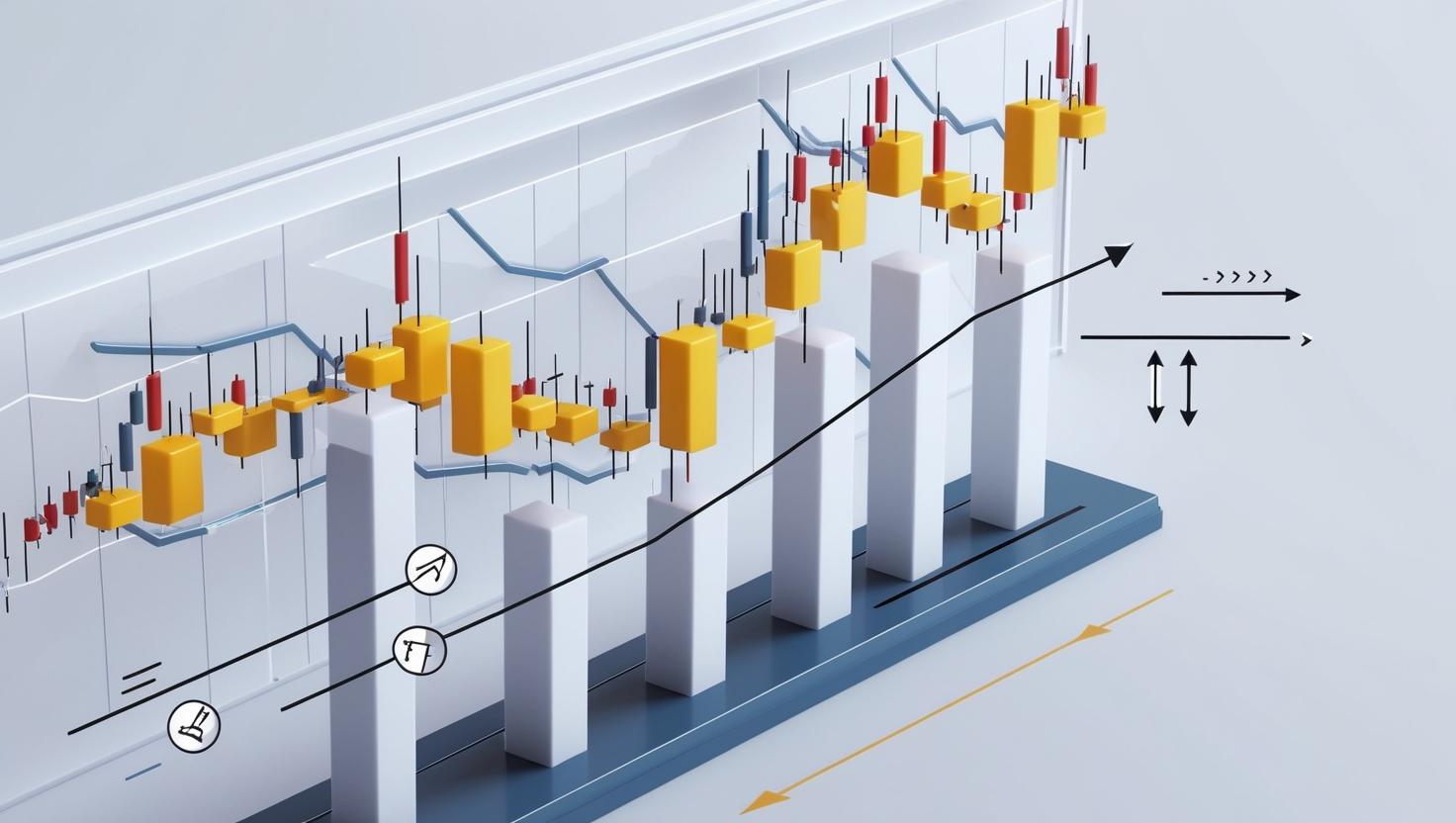Did you know that the first Bitcoin transaction was for two pizzas, costing 10,000 BTC? While pizza prices have skyrocketed, the world of trading has evolved dramatically, especially in crypto. In this article, we dive into the key differences between crypto day trading and other markets like stocks and forex. Explore unique risks, profit potentials, and effective strategies for navigating this volatile landscape. We’ll also cover essential tools for traders, market hours, tax implications, and liquidity considerations. Plus, discover psychological factors influencing your trading decisions and common pitfalls to avoid. With insights from DayTradingBusiness, you'll be better equipped to start your crypto day trading journey.
What is crypto day trading compared to stock trading?
Crypto day trading involves buying and selling cryptocurrencies within a single day to capitalize on price fluctuations, often using technical analysis and market trends. In contrast, stock trading typically involves longer holding periods and is influenced by company performance, earnings reports, and economic indicators. Crypto markets are more volatile, allowing for rapid gains or losses, while stock markets tend to be more stable. Additionally, crypto trading operates 24/7, unlike stock trading, which is limited to specific hours on business days.
How does crypto day trading differ from forex trading?
Crypto day trading differs from forex trading primarily in market hours, volatility, and asset characteristics. Crypto markets operate 24/7, allowing for continuous trading, whereas forex trading typically occurs during specific market hours.
Volatility in crypto is generally higher, leading to larger price swings, which can create more opportunities but also increased risk. Additionally, cryptocurrencies are often less regulated than forex, influencing factors like liquidity and security.
The assets traded also vary significantly; forex involves fiat currencies, while crypto trading focuses on digital assets like Bitcoin and Ethereum. These differences affect strategies, risk management, and potential returns in each market.
What are the unique risks of crypto day trading?
Crypto day trading carries unique risks due to high volatility, market manipulation, and lack of regulation. Unlike traditional markets, cryptocurrencies can experience dramatic price swings in short periods, leading to potential significant losses. The 24/7 trading environment means constant exposure to market changes, increasing the risk of emotional decision-making. Additionally, liquidity can vary greatly, making it harder to execute trades at desired prices. Finally, the prevalence of scams and hacking in the crypto space poses risks that are less common in other markets.
How do profit potentials compare between crypto and traditional markets?
Crypto markets often have higher volatility than traditional markets, leading to greater profit potential in shorter timeframes. Traders can leverage significant price swings in cryptocurrencies, resulting in larger gains. In contrast, traditional markets tend to offer more stable returns, with less dramatic price movements, which can limit profit opportunities. However, traditional markets often provide better regulatory protections and less risk of sudden losses due to market manipulation. Overall, while crypto can yield higher profits, it also carries increased risk compared to traditional trading.
What strategies are effective for crypto day trading?

Effective strategies for crypto day trading include:
1. Technical Analysis: Use charts and indicators to identify trends and entry/exit points.
2. Scalping: Make quick trades to profit from small price fluctuations.
3. Swing Trading: Hold positions for several days to capitalize on price swings.
4. News Monitoring: Stay updated on crypto news that can impact prices.
5. Risk Management: Set stop-loss orders to limit potential losses.
6. Diversification: Trade multiple cryptocurrencies to spread risk.
7. Leverage Trading: Utilize margin for larger trades, but be cautious of increased risk.
These strategies differentiate crypto day trading from other markets, where volatility and market hours may vary.
How does volatility impact crypto day trading versus other assets?
Volatility in crypto day trading creates rapid price swings, offering opportunities for quick profits but increasing risk. Unlike stocks or commodities, where volatility can be lower and more predictable, crypto's erratic movements can lead to larger gains or losses in a single day. This unpredictability requires traders to be more agile and responsive. In contrast, traditional assets may offer steadier trends, making them less suitable for the high-frequency strategies often employed in crypto trading.
What tools do crypto day traders use compared to stock traders?
Crypto day traders typically use tools like crypto exchanges (e.g., Binance, Coinbase), trading platforms with advanced charting (e.g., TradingView), and portfolio trackers (e.g., Blockfolio). They often rely on real-time data feeds and market sentiment analysis tools like Santiment.
In contrast, stock traders utilize brokerage platforms (e.g., E*TRADE, TD Ameritrade), stock screeners (e.g., Finviz), and fundamental analysis tools. While both use technical analysis, crypto traders are more focused on volatility indicators and blockchain analytics due to the market’s rapid changes.
How do market hours differ in crypto day trading versus other markets?
Crypto markets operate 24/7, allowing day traders to buy and sell at any time, unlike stock markets that have fixed hours (typically 9:30 AM to 4 PM on weekdays). This constant availability means crypto traders can respond instantly to market changes and global news. Additionally, crypto markets can experience higher volatility at any hour, including weekends, unlike traditional markets that may have lower activity outside of regular hours.
What are the tax implications of crypto day trading?
Crypto day trading is subject to capital gains tax, just like stocks. Profits from trades held for less than a year are taxed as short-term capital gains, often at your ordinary income tax rate. Losses can offset gains, reducing tax liability. Unlike traditional markets, the IRS treats cryptocurrencies as property, so every trade is a taxable event. Make sure to track your trades accurately to report gains and losses correctly.
How does liquidity affect crypto day trading?
Liquidity significantly impacts crypto day trading by influencing the ease of entering and exiting positions. High liquidity means tighter spreads and less slippage, allowing traders to execute orders quickly at desired prices. In contrast, low liquidity can lead to larger price swings and difficulty in executing trades, increasing risk. Unlike traditional markets, where liquidity is often more stable, crypto can experience rapid changes, affecting strategies and potential profits.
How Do Crypto Day Trading Markets Compare to Other Trading Markets?

Crypto day trading differs from other markets primarily in volatility, liquidity, and operating hours. Cryptocurrencies often experience more significant price swings within shorter timeframes compared to stocks or forex, providing more trading opportunities. Additionally, crypto markets operate 24/7, allowing for continuous trading, unlike traditional markets that have set hours. Lastly, the regulatory environment for cryptocurrencies can vary greatly, influencing market behavior and trader strategies.
Learn more about: How to Choose the Best Crypto Markets for Day Trading
Learn about How to Choose the Best Crypto Markets for Day Trading
What psychological factors influence crypto day trading?
Psychological factors influencing crypto day trading include fear of missing out (FOMO), which drives traders to make impulsive decisions based on market hype. Additionally, the high volatility of cryptocurrencies can lead to emotional reactions, causing panic selling or greed-driven buying. Cognitive biases, like overconfidence, often lead traders to underestimate risks and overrate their market predictions. The need for constant monitoring can create stress and lead to burnout, impacting decision-making. Lastly, social influence and community sentiment can sway traders, affecting their strategies compared to more stable markets.
How can one start crypto day trading effectively?
To start crypto day trading effectively, focus on these key differences from other markets:
1. Volatility: Crypto markets are more volatile, leading to larger price swings. Develop strategies to capitalize on this volatility.
2. Market Hours: Crypto trading is 24/7. Create a schedule that aligns with your lifestyle while staying updated on market trends.
3. Liquidity: Some crypto assets may have lower liquidity. Choose well-established coins for better entry and exit points.
4. Technical Analysis: Rely heavily on technical analysis and chart patterns, as fundamentals can shift rapidly in the crypto space.
5. Leverage: Many crypto exchanges offer high leverage. Use it cautiously to avoid significant losses.
6. Regulatory Environment: Be aware of the changing regulations in the crypto space, as they can impact trading strategies.
7. Community and News Impact: Stay engaged with crypto communities for insights. News can cause immediate price changes.
By understanding these differences, you can develop a more effective approach to crypto day trading.
Learn about How to Diversify Your Crypto Day Trading Portfolio
What are the common mistakes in crypto day trading?

Common mistakes in crypto day trading include overtrading, which leads to high fees and emotional decision-making. Many traders fail to set stop-loss orders, resulting in significant losses. Ignoring market trends and news can also be detrimental; crypto prices can shift rapidly based on external factors. Additionally, lack of a solid trading plan often leads to impulsive trades and missed opportunities. Finally, underestimating volatility can cause traders to panic or hold onto losing positions too long.
Learn about Common Mistakes in Crypto Day Trading
How does regulation impact crypto day trading compared to stocks?
Regulation impacts crypto day trading by creating a less stable environment compared to stocks. Crypto markets are often less regulated, leading to higher volatility and potential for rapid price swings. This can increase profit opportunities but also raises risks. In contrast, stock markets are more heavily regulated, which can provide more stability and investor protection. Regulations in stocks ensure transparency and reduce the chances of market manipulation, making day trading strategies more predictable. Overall, crypto day trading entails greater risk with potential rewards, while stocks generally offer a more controlled trading landscape.
Learn about How to Diversify Your Crypto Day Trading Portfolio
What resources are available for learning crypto day trading?
Crypto day trading differs from other markets mainly in volatility and trading hours. Resources for learning include:
1. Online Courses: Platforms like Udemy and Coursera offer courses tailored to crypto trading strategies.
2. YouTube Channels: Channels like DataDash and The Modern Investor provide insights and tutorials.
3. Books: Titles like "The New Trading for a Living" cover principles applicable to crypto.
4. Trading Forums: Reddit and Bitcointalk have active communities discussing strategies and tips.
5. Demo Accounts: Use platforms like Binance or Kraken for simulated trading to practice without risk.
6. Webinars and Live Streams: Many experienced traders host sessions to share real-time strategies.
These resources will help you grasp the unique aspects of crypto day trading compared to traditional markets.
How do transaction fees compare in crypto day trading versus other markets?
Transaction fees in crypto day trading are generally higher than in traditional markets. Crypto exchanges often charge fees ranging from 0.1% to 1% per trade, plus network fees for blockchain transactions. In contrast, stock trading platforms may charge lower commissions, around $0 to $10 per trade, depending on the broker. Additionally, crypto markets can have higher volatility, leading to potential slippage costs that can further increase overall trading expenses.
Learn about How to Balance Day Trading with Other Responsibilities
Conclusion about Differences Between Crypto Day Trading and Other Markets
In summary, crypto day trading presents a unique landscape distinct from traditional markets like stocks and forex. Its heightened volatility, distinct strategies, and unique risks demand specialized knowledge and tools. Understanding liquidity, market hours, tax implications, and psychological factors is crucial for success. By leveraging resources and insights, you can navigate this dynamic trading environment effectively. For comprehensive guidance and support, exploring the offerings of DayTradingBusiness can enhance your crypto trading journey.
Learn about Differences Between Forex and Other Day Trading Markets